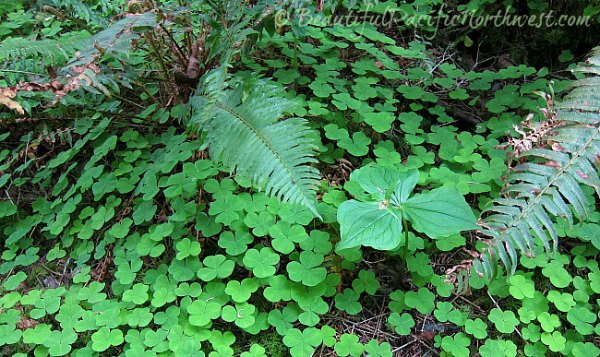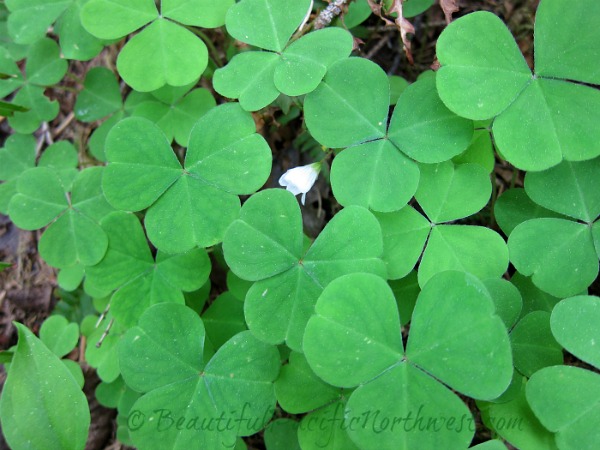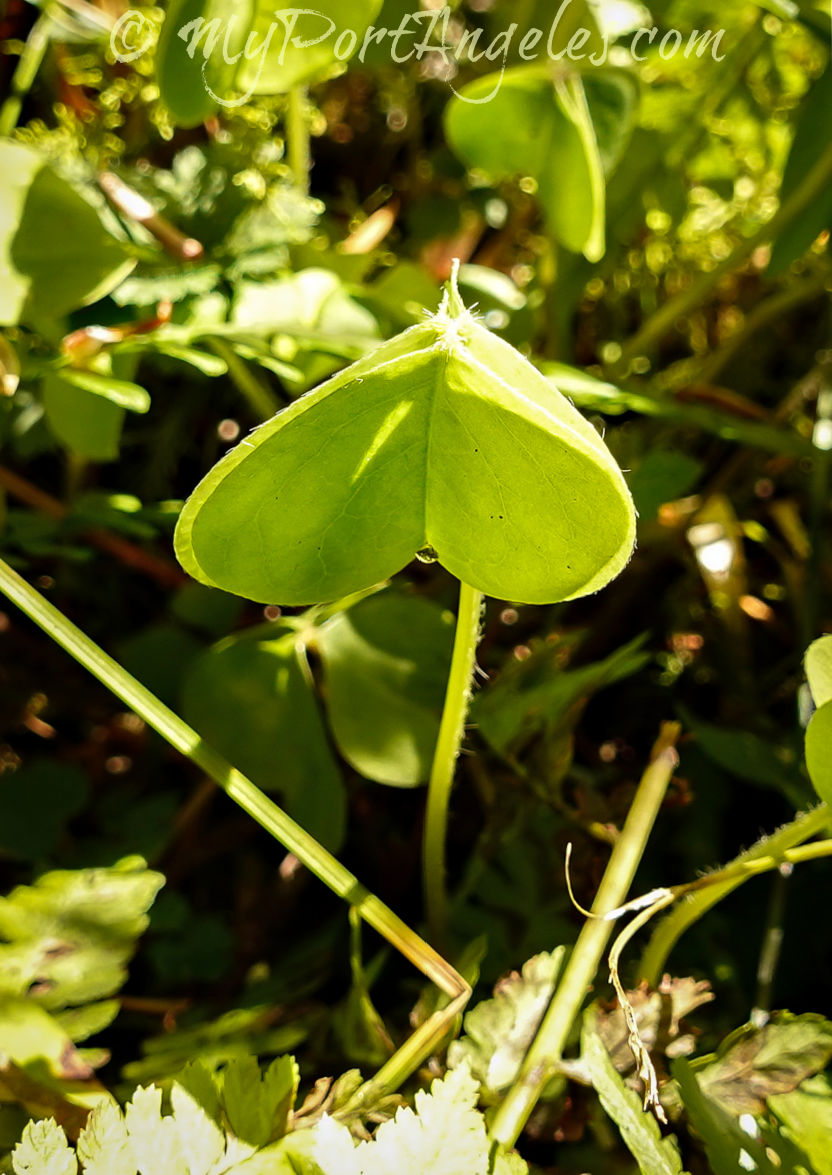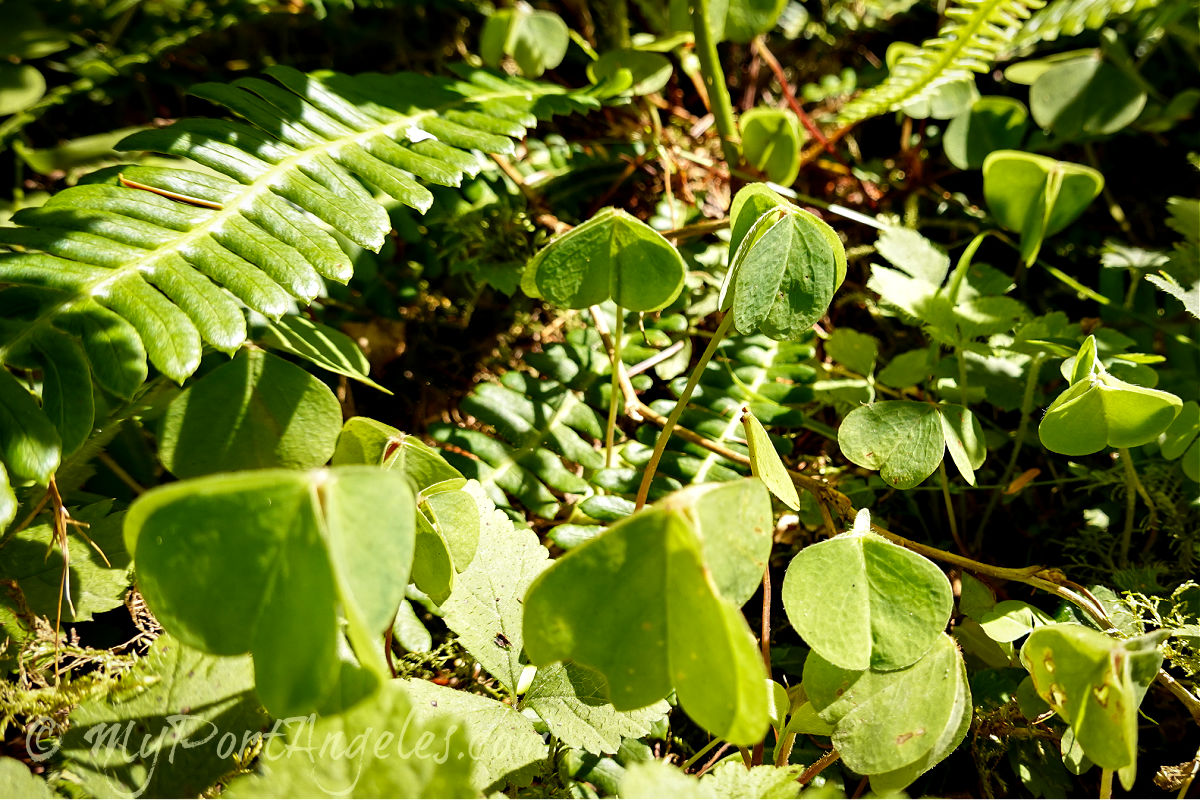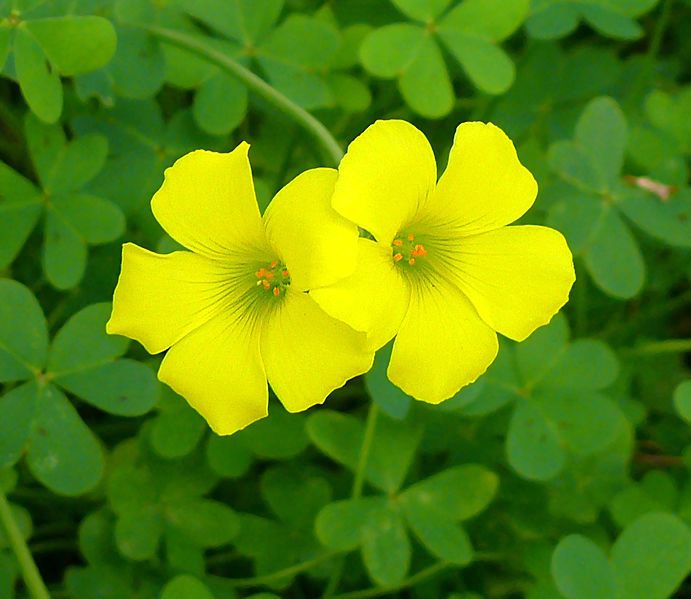Oregon Oxalis
Oregon Oxalis (Oxalis oregana). Recognize this distinctive ground-covering wildflower in the Pacific Northwest with these photos and descriptions.
Oregon Oxalis is a blooming ground cover native to the temperate rainforests of the Pacific Northwest, from British Columbia, through Washington and Oregon, and as far south as the redwood rain forests in Northern California.
The genus name Oxalis comes from the Greek "oxys," meaning sour. This is a reference to the mildly toxic levels of bitter oxalic acid that they contain, similar to spinach and other leafy greens.
The plant is also commonly known as redwood sorrel due to its presence in redwood forests. And in fact, no temperate rainforest in the Pacific Northwest is considered a serious rainforest without the presence of Oxalis oregana. It is one of our most common and sweet Pacific Northwest native plants. They can be found nestled at the base of, and spreading out underneath, the canopy of conifers and other large trees, especially Douglas Fir.
Habits of Oregon Oxalis
Oregon Oxalis loves the shade. It is often found under towering tree canopies and in the shadow of bushes and brambles cavorting with giant chain fern, trillium, sword fern, and wild ginger. This perennial herb rises no more than 8 inches from the soil level. It spreads by underground stems (rhizomes) to form soft green carpets of oversized clover-shaped leaves, which are said to be fire resistant.
Redwood sorrel blooms mostly in the spring time. White to pink flower buds bloom singly, starting out cup-shaped and opening up to form stars that float above dark green heart-shaped leaves with a hint of purple underneath.
After the flowers fade, small hairy egg-shaped fruits ripen and then explode seeds in every direction.
Though a Pacific Northwest native wildflower, Oregon Oxalis can easily be cultivated in your garden if you can provide shade and cool temperatures. Once established, it is easy to care for. The more you can provide growing conditions that mimic its native environment - very shady, cool, and damp, the better it will grow and flower. Unless you live in or near a rain forest, this will likely entail plenty of watering.
Purchase plants from a native plant nursery. Or obtain a raft of required permissions from agencies or landowners and then collect the wild seeds.
Oregon Oxalis and Nyctinasty
A Curious Characteristic
One of Oregon Oxalis's most interesting features is its habit of folding down into little pyramid shapes to protect its delicate leaves when the sunlight hits it.
Redwood sorrel can perform photosynthesis with just 1/200th of the equivalent of full sunlight. It requires so little sunlight to live and grow that when a beam of direct light strikes a leaf, it begins to close itself. In 10 seconds the downward movements of the 3 leaf segments can be seen with the naked eye, and within 6 minutes, the movement is complete - the leaves are pressed against the stem forming a little triangular pyramid.
Heavy rain can prompt the leaf-folding, as can a human touch. This action is known as nyctinasty, referring to the ability of a plant to open or close depending on light or darkness, day or night. A 10-minute lag follows after the relief of the disruption before it slowly unfurls itself and once again holds its leaves horizontal to the sky.
Try testing it out yourself the next time you're hiking in any of the Olympic National Park rain forests.
Oxalis oregana is not the invasive "noxious weed" Bermuda buttercup (Oxalis pes-caprae), which sounds sweet, but is known to take over a garden in areas with enough rainfall.
The flowers of Oxalis pes-caprae are similarly shaped but yellow, and the leaves are similarly clover-shaped as you'd expect with plants related to each other. Both plants are edible. (Photo credit Wikipedia.)
The Edible Redwood Sorrel
Native peoples in the Pacific Northwest would add redwood sorrel to dried fish and use the entire plant to make preparations for rheumatism and drawing out infection from wounds.
Both the flowers and the leaves can be tossed into a salad where their mild, lemony, slightly acidic flavor adds a slight punch and a bit of color.
If enough is eaten in one sitting, it may potentially become toxic, though because of the acidic flavor it is doubtful you'd want to eat that much at once.
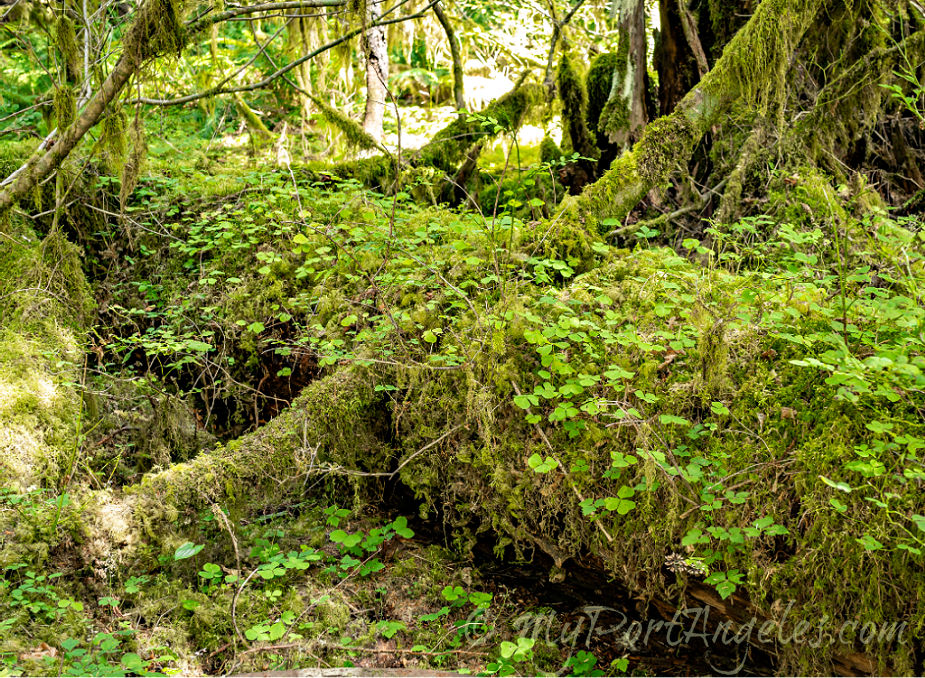
Sally forth through the Olympic National Forest rainforests and see this intriguing little wildflower for yourself!
Other links you may enjoy:
What Are Your Favorite Species of Wild Plant Life in This Area?
Tell Us Your Story and Share Your Photos!
Tell Us Your Story and Share Your Photos!
There is an incredible diversity and amazing array of beauty found in the Pacific Northwest flora! In this region, wild plant life can present as ancient giants, microscopic wonders, intoxicatingly fragrant, some edible, healing, others quite poisonous. Splashes of brilliant in color, or shrouded and mysterious, each one, amazing in its uniqueness...
Do you have a great story about the wild plant life found in the Olympic National Park? We'd love to hear about it and please share your photos as well! Just click into the title box below and go from there. When published, you'll have "your own" page on MyPortAngeles which you can share with friends or anyone who asks!
We're happy to ensure professional and amateur photographers get credit for their work. Leave us your name in the form below, and means of contact, website, or FB page info so we can link back to you.
